
Pictured to the left is Professor William Hoskins (via). What you see there is not the mystery Moog, but his Moog modular system. This post is about another Moog synth, one most likely based on the Sonic VI. If you have any information on what this synth might be after reading this, please feel free to leave a comment or contact me directly. My contact info is on the bottom right of the site. I have already contacted Michelle Moog-Koussa and Brian Kehew author of Kaleidoscope Eyes A Day in the Life of Sgt. Pepper, as well as Trevor Pinch, author of Analog Days [Amazon hardcover & paperback, preview on Google books], and featured in this exclusive post. I also contacted James Husted of Synthwerks, George Mattson of Mattson Mini Modular, Steven Jones of Synthwood, and Carbon111, all of whom know their synth history. None were familiar with what the synth might be.
The story: I was recently contacted by a Paul Rego with the following:
"I've been searching the Internet for over a year now and have not been able find a specific synth. Since you seem to know and work with every type of synth known, I thought I'd ask you...
Around 1973 - 1974, I took private synthesizer lessons at Jacksonville University (Florida). The instructor was Professor William Hoskins and the synth was a custom Studio Moog assembled by Professor Hoskins.
One day, Professor Hoskins showed me his personal, portable synthesizer. He brought out what looked like a brown suitcase. When he opened it, I saw a Moog Sonic VI.
This is nothing new. I've seen lots of images of this synth on the Internet. The one aspect of this particular synth, that I cannot find anywhere, is that it had a touch-sensitive keyboard. The keyboard was made of plastic and had a gray / brown color. Outlining the keys (showing the location of the 'white' and 'black' keys) was an almost medium blue color (about an eighth-inch thick). (He and I tinkered with this synth for about a half-hour to an hour.)
Professor Hoskins passed away several years ago, so I can't ask him about it. I did contact his family but they don't remember anything about this synth.
I do remember Professor Hoskins telling me that he and Bob Moog had 'gone to school together'. I think he was referring to electronics school but I never asked him more about it. I thought I had read somewhere that Professor Hoskins and Bob Moog had briefly worked together on a Sonic VI prototype but I don't know if that's true. (Even if what I saw was a prototype, someone has to own it now and should be proud enough of it to post some photos somewhere.)
I thought the background story might help in your own research on this.
Basically, I'd just like to know if this synth ever existed or am I just not remembering it correctly.
Thank you for your time and attention."
My first obvious guess considering the blue was the Buchla Music Easel or separate Buchla touchplate keyboard modded into the case of a Sonic VI. I sent Paul a couple of links to various images.
Paul replied: "the synth I saw didn't look like the Buchla Easel. Good call though.
The 'blue', which outlined the keys on the Sonic VI I saw was a bit lighter in color than the blue in your photos and maybe had a bit of green in it (closer to turquoise). There was no red or other color on the keyboard (that I can remember) and the entire keyboard seemed to be one piece of plastic with only the blue / green outlines separating the 'keys'.
I also read a story recently about the time when Musonics bought Moog and had a synth ('Sonic V'?) of their own, at that time, but I haven't research this too much yet. One thought I had was the synth I saw was something from Musonics but was never officially released (until it had the 'Moog' name placed on it). I'm pretty sure the synth I saw had the 'Moog' logo and the word 'Sonic VI'. (Not 100% sure but it seems clear in my memory.)"
I also sent Paul images of the EMS Synthi AKS. Paul replied it was the closest, but definitely not it.
 I contacted Michelle Moog-Koussa and Brian Kehew to see if they knew of anything. Michelle replied: "...I can tell you that we have several of William Hoskins reel-to-reel tapes in the archives, so there was obviously a significant professional relationship between he and Bob.
I contacted Michelle Moog-Koussa and Brian Kehew to see if they knew of anything. Michelle replied: "...I can tell you that we have several of William Hoskins reel-to-reel tapes in the archives, so there was obviously a significant professional relationship between he and Bob.I don't ever remember reading anything about the Sonic VI, but maybe Brian does. One thing I can tell you for sure is that Dad began working with John Eaton in 1970 on the Multi-Touch Sensitive keyboard [left via]. The main component of the MTS was the touch-sensitive keyboard, of course. It's not out of the realm of possibility that Dad would have used his work with John to push boundaries on another project."
Brian replied: "Bob didn't design or build the original Sonic V (from Musonics before they bought Moog) that was Gene Zumchak: The Sonic V did have a brown wood style. It's even unlikely Bob did much on the Sonic Six as it was the same thing with a new outer case.
The Sonic VI was the version Moog made in 1972 and later, in a plastic suitcase version. Many of these were made vs the very few Sonic V's. So one might think they saw a Sonic VI when it was the V (same front panel and features). But the brown suitcase and colored keys and touch sensitive thing are ALL unusual. I know a little about Prof Hoskins from the paperwork of the past, but no mention of this synth. Definitely unusual to have keys like that anywhere, anytime!" Followed by: "And there IS touch (velocity) sensitivity on Wendy Carlos' synth by 1971 for Clockwork Orange, but it's used under the normal keyboard. THIS velocity was very possible, but would not make the keys look different. Again - maybe a Sonic V was retrofitted with a cooler keyboard later in the 80s, but why not do so on a BETTER synth!?" :)
On a separate thread, Trevor Pinch got back to me with the following: "Bill Hoskins was important in that he was one of the first people David VanKouvering approached about minimoog reiail sales etc. I have a good album of his somewhere! I think he may have been Bob's favorite composer for a while.
I have no idea about the touch key board but I'm in touch with Gene Zumchak the guy who designed the Sonic Six, so I'll ask him. (I guess you know the joke that the Sonic Six was known by Moog engineers as the Chronic Sick!)
Actually its story might be kinda interesting - Zummy (as he is known) told me that it was made with 741 op amps and in many ways was more advanced than the minimoog.
Maybe it has had an unfair press. I never heard one or saw one for real."
James Husted sent me the image of Professor Hoskins at the top of this post. I sent it to Paul to see if maybe it brought back any memories that might help.
He replied: "The custom Moog modular in that photo is the same one I took lessons on. However, this is an early photo and when I saw that Moog modular, Professor Hoskins had already added a top layer to that cabinet — which included a Moog sequencer. (I have a photo of it, that I took around 1990, but the top part of the photo, showing the upper section, is cut off.)
The reason you didn't see Professor Hoskins' 'Sonic VI' is... I'm guessing that he didn't bring it to the university very often. When I saw it, I was at his home. He had invited me over one Saturday afternoon to see HIS custom Moog modular. It was in his garage, which he had made-over into a nice studio. It also had a two-manual organ, at least two reel-to-reel tape decks and LOTS of recording tape. Later, during that same session, he said 'There's something else I want to show you. Come inside.' We went into the living room and I sat on the couch. He said 'I'll be right back.' After about a minute, he came back carrying a brown 'suitcase'. He set it on the coffee table in front of me and sat down on the couch. He opened it up and... Whoa! I had never seen one of these and it was the first time I had seen a Ring Modulator!
---
I remember seeing Professor Hoskins play his Sonic VI during a live performance of his album 'Galactic Fantasy / Eastern Reflections'. The Jacksonville University orchestra played most of his composition but at one point his Sonic VI was brought out and he played it while at center stage. I could see it clearly from my seat but, of course, I could only see the back of it, which simply looked like the back of a brown suitcase.
---
Sorry it took so long to get back to you. Since I think this is important, I thought I'd try to recreate the 'Sonic VI' I think I saw. I 'Photoshopped' a production Sonic VI and attached it to this message. It's the best image of what I think I saw.
Modifying the image forced my memory to go into more detail. Here's what I'm fairly certain of:
• The outer color of the "suitcase" was almost dark brown.
• The outer shape was more square than the production Sonic VI.
• The thickness of the top and bottom sections was thicker than the production Sonic VI model.
• The keyboard was made of slightly textured plastic, otherwise completely flat, was brown / gray in color and had a vibrant blue outline between the keys. (I'm not 100% sure if the "black" keys were outlined or solid blue.)
• The background color of the back panel and the area surrounding the keyboard was almost dark brown. It looked like it was made out of either pressed cardboard or thin wood. It really reminded me more of the thin 'wood' used in old, tube televisions and radios (during the 1960s).
What I'm not 'fairly sure' of:
• I can't remember if it had a Mod Wheel.
• I think there was more space between the modules.
• I think it had two speakers (placed on the left and right side of the back panel). Each might have been the size of the center speaker-grill in my photo.
• I can't remember if there were any connectors, switches or knobs on the keyboard section."

Update: via Aaron aka theglyph in the comments: "Holy shit! That's the guy from JU. There was an electronics repair/pawn shop here in Jacksonville called Active Electronics that had a bunch of synths back in 90's. The owner had a sign in the store explicitly stating that the synths were not for sale and that customers were not allowed to walk up and look at them or touch them. I walked in day and walked close enough to notice that the MiniMoogs had very low serial #'s. It wasn't until I read Analog Days that I found out that the earliest Mini were sold here in Jacksonville. There so much more to this story that I don't know where to begin but I can say that I did an obscure Moog at the store that I've never seen photographed since and I simply thought I was loosing my mind recollecting it. WOW!
Cheers,
theglyph"
Update: Above, Brian originally mentioned Bill Hemsath as the person that designed the Sonic V. He meant to say Gene Zumchak. This has been updated.
Updates: via Dorothy in the comments:
"HI, as a Hoskins kid, I watched Dad perform on the synthesizer and I know we had the Sonic but I thought it was a "V". Dad had several custom modules built for him by Bob Moog. They were friends but didn't go to school together -- Dad went to Trumansburg NY to work with Bob on the synthesizer that they got for Jacksonville University (in 1969, I think). I will have to go digging in the Will Hoskins letters that I have. Those of you who knew Dad know that he was very meticulous about writing up the components that he bought and what they were for.
Late in Dad's life, when he was basically letting go of most composing effort except for revising existing scores, Bob helped Dad find a collector (in Germany, as I recall), who bought all of Dad's big home synthesizer. I think some of the smaller units were in the hands of Steve Smith, who was Dad's right-hand man at the JU studio for some years. Whatever happened to them, I don't think Dad would have cared as long as someone was using them to create music. He wouldn't have collected synthesizers as museum pieces, he actively used everything he got from Moog until he was ready to let it go."
Followed by: "BTW, that last time I spoke to Bob Moog was after Dad died, when Bob came to Rochester NY http://www.esm.rochester.edu/news/?id=132 which is near where I live now. Bob spoke very fondly of working with Dad, because Dad cared as much about the science of music synthesis as any composer Bob knew. Dad did some work with him on modulators and other components for JU and the Hoskins home studio."
Followed by: "Hoskins synth photo --not a Sonic -- in news article 1970 [link]"
Update 6/6/2010:
Some more interesting bits of Moog history:
Trevor Pinch checked with Gene Zumchak who had the following to say:
"I am not aware of a touch sensitive keyboard on the Sonic V or 6. It did have a two-note keyboard and the highest key pressed and lowest pressed could be routed to Osc 1 and Osc 2.
They removed the keyswitch bus and superimposed a highpitch (100KHz?) tone on the voltage string. This might have been the source of a whine that some users complained about that wasn't present in the Sonic V."
via Josh Brandt: 'Okay, I did hear back from David Mash [VP of IT at Berklee and friend of Bob Moog], who says that the story he was telling me several years ago was about a keyboard Bob was building for John Eaton. I asked about the story he'd told me and if the pictures you posted could be of the instrument he'd been talking about, and he said:
"The story I was no doubt telling was definitely about the keyboard Bob built for John Eaton [middle pic above]. Bob was going to show us the completed instrument (which my friends Jeff Tripp and Paul Derocco helped complete), but we never got to see it due to the way the conversation turned over dinner. I did see the instrument several times during the design/build stages and again later after it was complete.
The keyboard was simply a controller and not a synth, so definitely not the portable synth the blog is referring to. I know Brian, and was involved briefly with him and a bit more with Michelle Moog on the NAMM Museum exhibit, and they used a couple of my photos for the exhibit. They're great people and working hard to preserve Bob's legacy.'"
Update via WmJHeart in the comments:
"Thanks Matrix, for hosting this page. I own a copy of Will's Galactic Fantasy & Eastern Reflections (my personal favorite) recording on vinyl. But I also discovered and listened to the entire album on YouTube recently! Here:"
Galactic Fantasy - Eastern Reflections (1979)[Full Album]
Published on Jul 12, 2017 TheHomecoming
"Rare electronic/synth/moog private pressing LP
TITLE 'Galactic Fantasy - Eastern Reflections'
William Hoskins, "Galactic Fantasy, Eastern Reflections" [CP-158]
TRACK 01 AUDIO TITLE "Overture : Stars Are Suns" PERFORMER "William Hoskins" INDEX 01 00:00
TRACK 02 AUDIO TITLE "Intermezzo : Interplanetary Communique" PERFORMER "William Hoskins" INDEX 01 06:39
TRACK 03 AUDIO TITLE "Star Nocturne" PERFORMER "William Hoskins" INDEX 01 08:11
TRACK 04 AUDIO TITLE "Scherzo : Comets" PERFORMER "William Hoskins" INDEX 01 16:35
TRACK 05 AUDIO TITLE "Beyond Beyond" PERFORMER "William Hoskins" INDEX 01 18:54
TRACK 06 AUDIO TITLE "Prolog : Theme and Variation" PERFORMER "William Hoskins" INDEX 01 23:40
TRACK 07 AUDIO TITLE "Lower Heterophonie" PERFORMER "William Hoskins" INDEX 01 27:55
TRACK 08 AUDIO TITLE "Song : Open Skies" PERFORMER "William Hoskins" INDEX 01 31:22
TRACK 09 AUDIO TITLE "Drum Chime" PERFORMER "William Hoskins" INDEX 01 35:28
TRACK 10 AUDIO TITLE "Upper Heterophonie" PERFORMER "William Hoskins" INDEX 01 39:41
TRACK 11 AUDIO TITLE "Epilog : Processional" PERFORMER "William Hoskins" INDEX 01 41:30
A1
Overture: Stars Are Suns
A2
Intermezzo: Interplanetary Communique
A3
Star Nocturne
A4
Scherzo: Comets
A5
Beyond Beyond: An Entropy Study
A6
Eastern Reflections
Eastern Reflections
B1
Prolog: Theme and Variation
B2
Lower Heterophonie
B3
Song: Open Skies
B4
Drum Chime
B5
Upper Heterophonie
B6
Epilog: Processional
Criminally under-rated set of Early American Moog Modular Synthesizer Music - the sole release by composer William Hoskins, the 'Director of Electronic Music and Composer-in-Residence at Jacksonville University in Florida.' Issued in 1979 by the Harriman, NY-based Spectrum - a 'Division of UNI-PRO Recordings, Inc.' the LP consists of a pair of discrete pieces, with each taking up a side of its own."
Update via Kimberly S Beasley in the comments:
"Hello, everyone. I am the current chair of the Department of Music at Jacksonville University and I have the original Sonic VI manuals and one of Hoskin's Moogs....happy to share photos tomorrow."
Kimberly sent in the images with the following:
"This has been in the possession of our Professor Emeritus Dr. William Schirmer as it was given to him by Hoskins. Hoskins' granddaughter Dorothy is also aware of the instrument. We also have a large collection of manuscripts of Hoskins.
There is also a mini-Moog we just refurbished in our recording studio."
You can see WM. Hoskins written on the top right of the manual. Note "Home Copy" on the blue cover. It's kind of neat to think of him perusing through the manual in the comfort of his home.



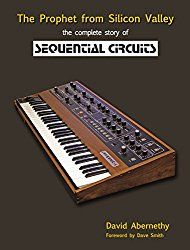



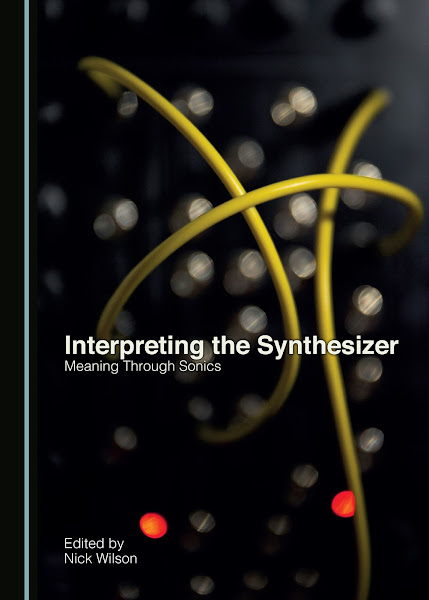
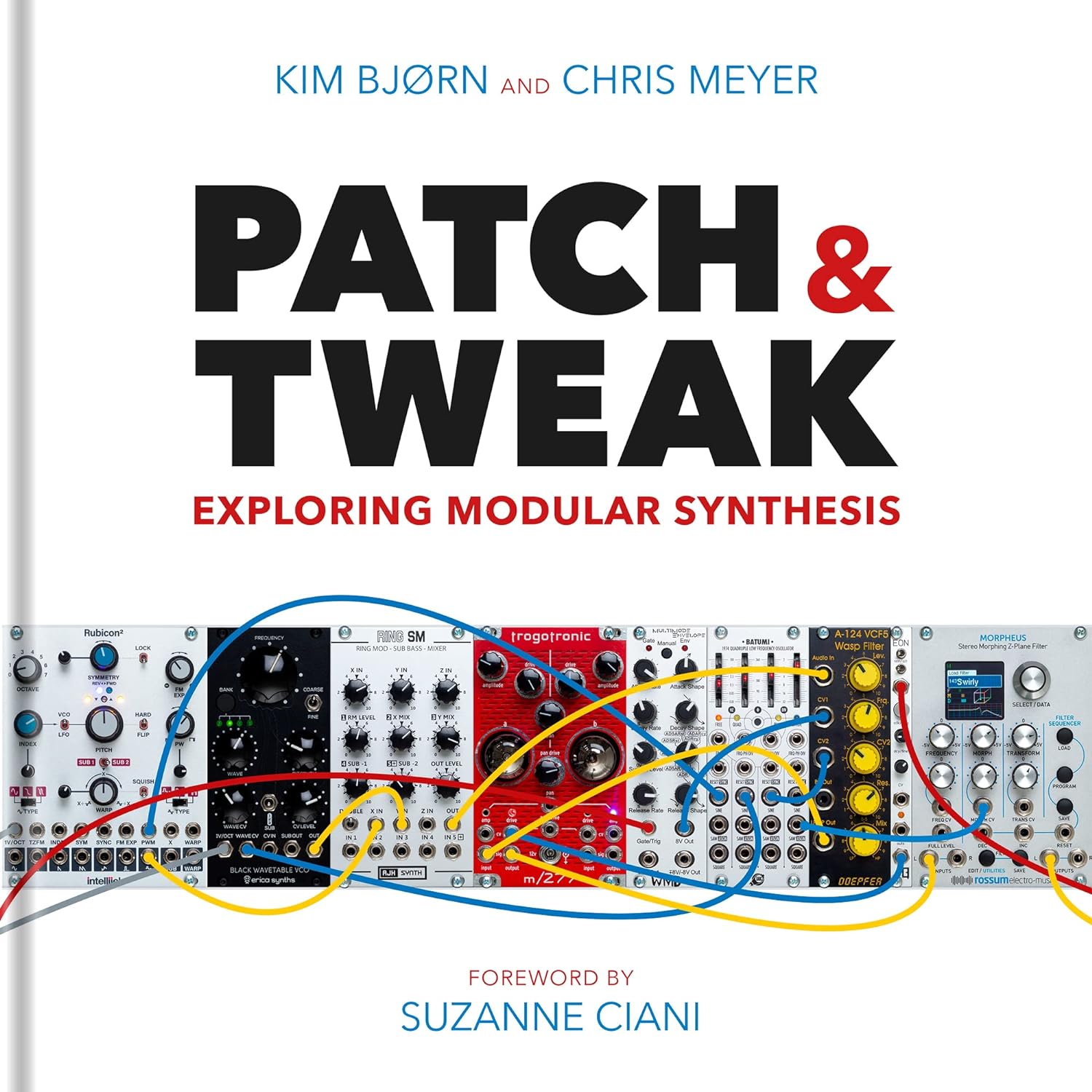

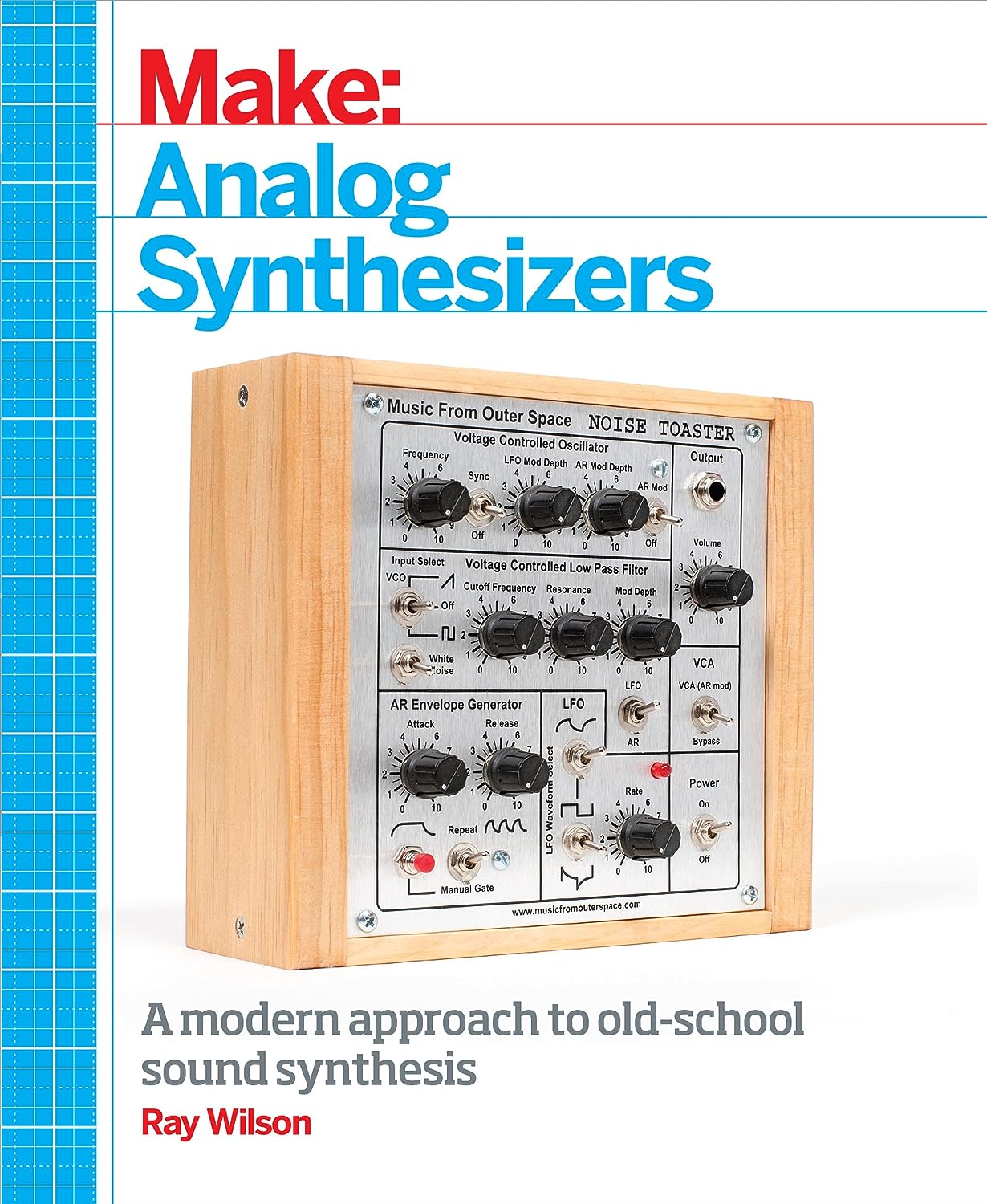

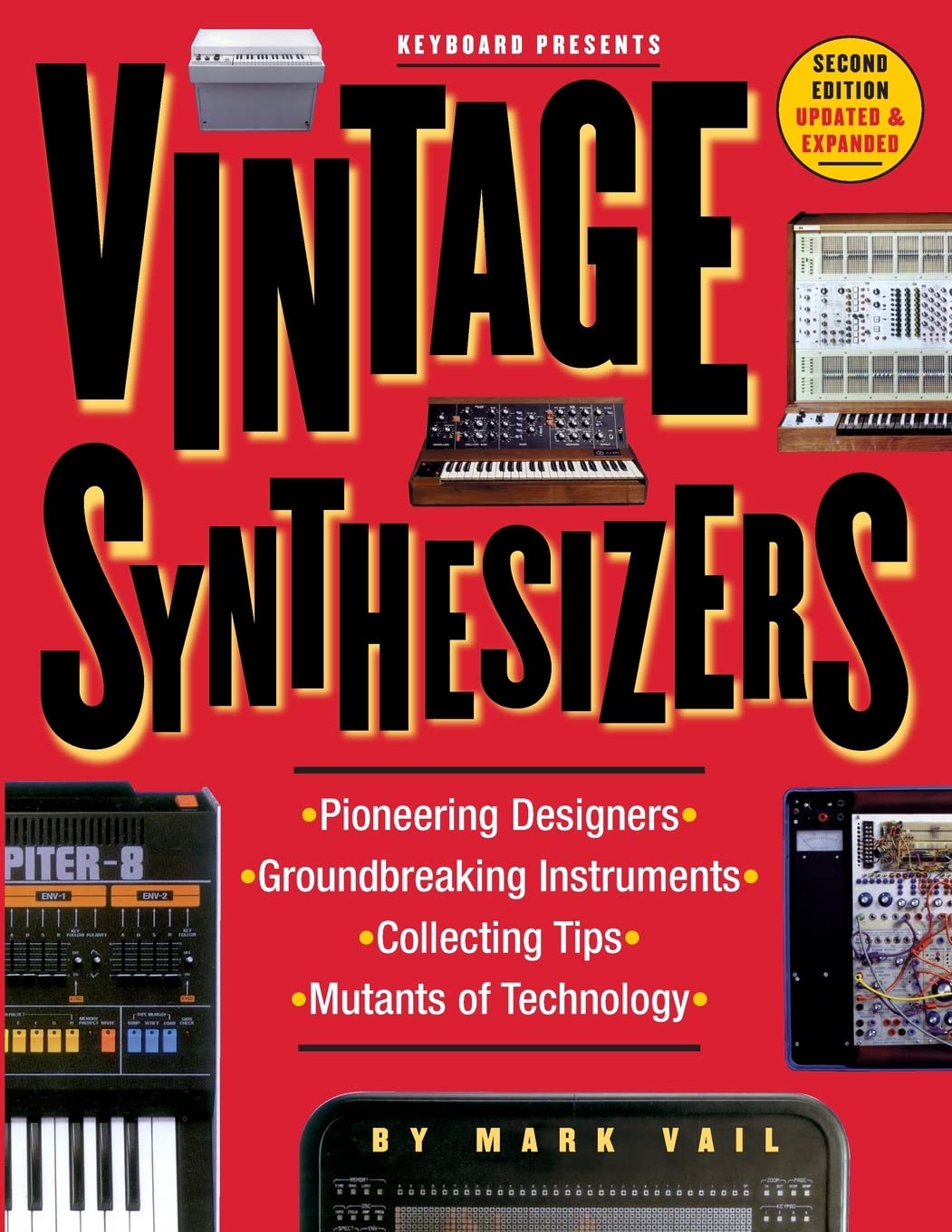
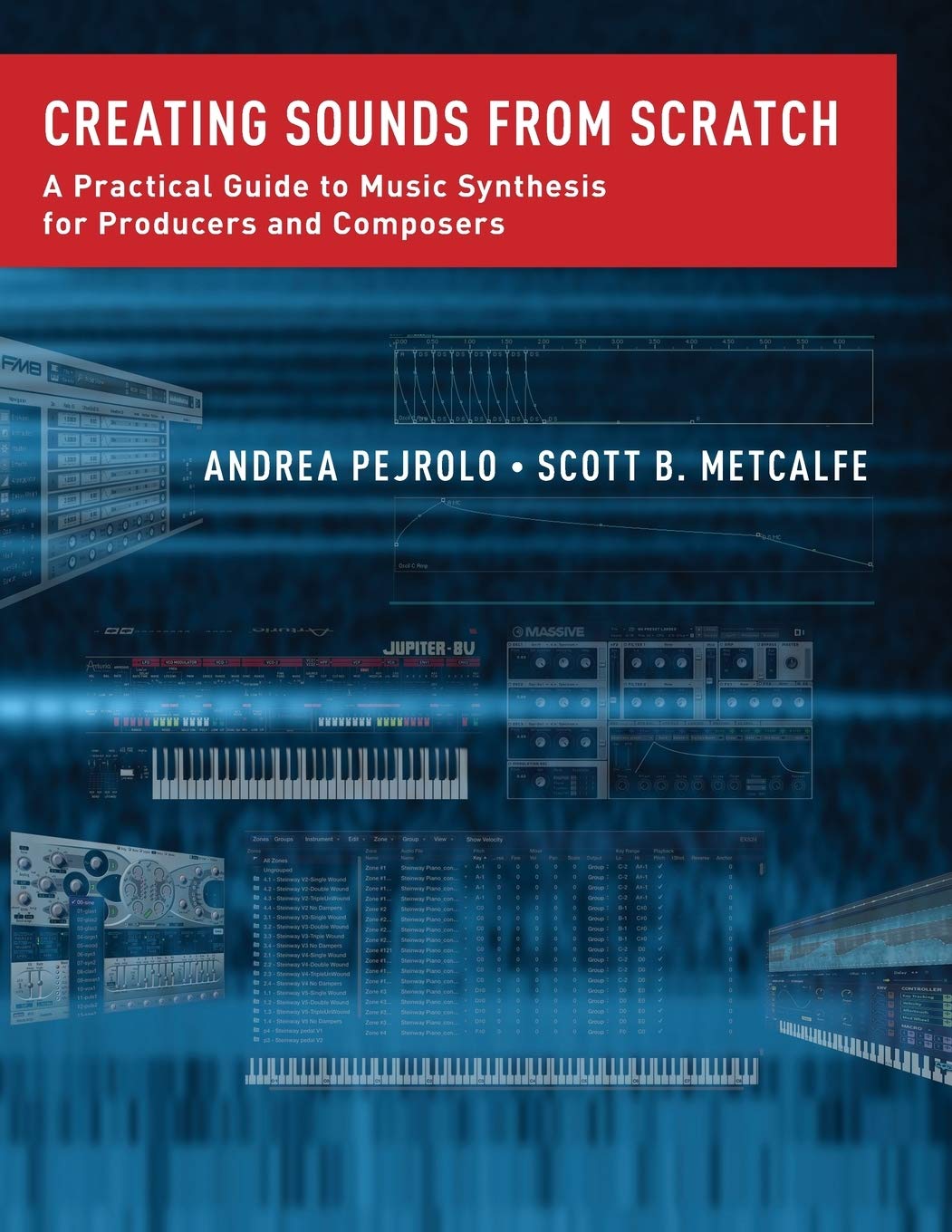
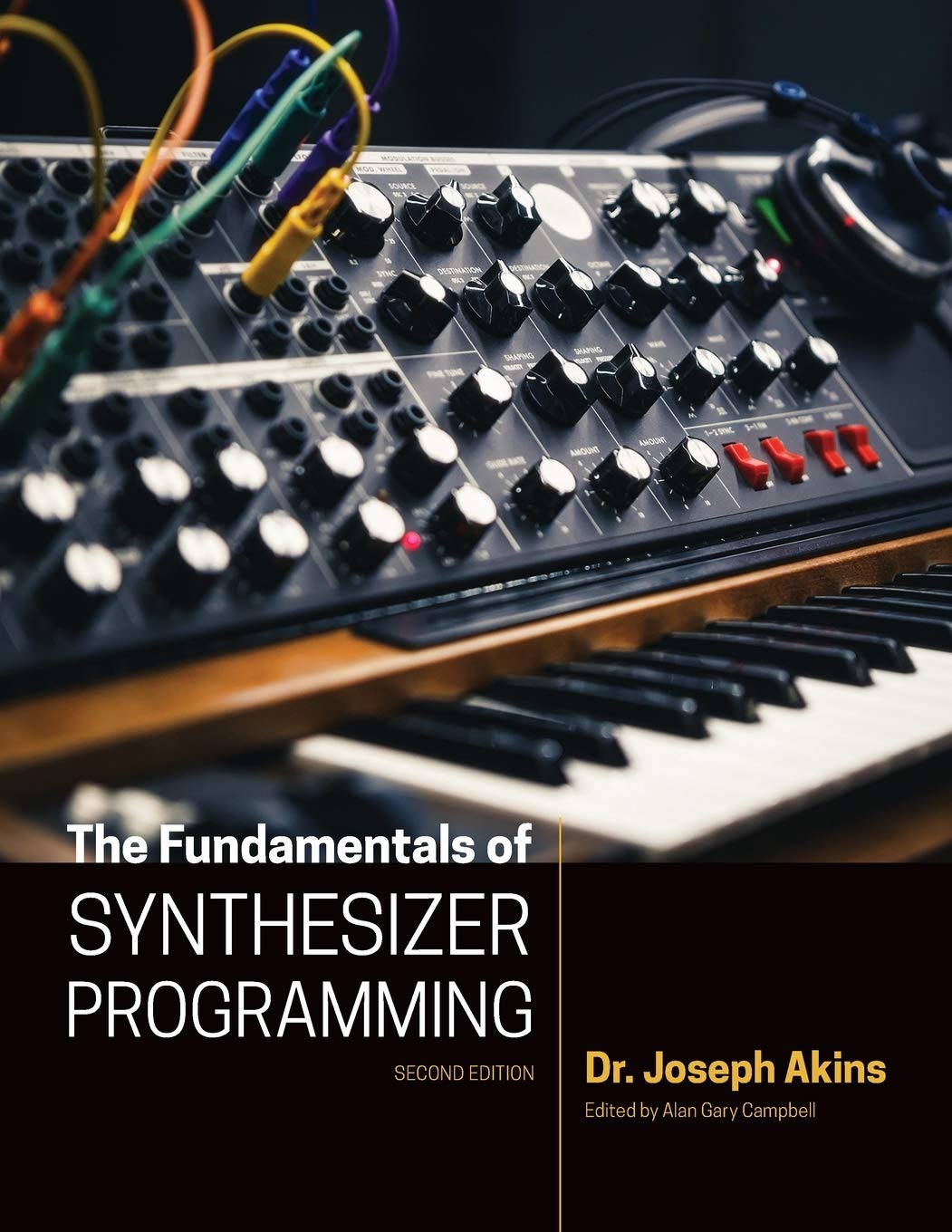














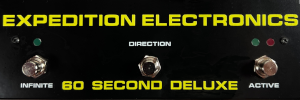










Holy shit! That's the guy from JU. There was an electronics repair/pawn shop here in Jacksonville called Active Electronics that had a bunch of synths back in 90's. The owner had a sign in the store explicitly stating that the synths were not for sale and that customers were not allowed to walk up and look at them or touch them. I walked in day and walked close enough to notice that the MiniMoogs had very low serial #'s. It wasn't until I read Analog Days that I found out that the earliest Mini were sold here in Jacksonville. There so much more to this story that I don't know where to begin but I can say that I did an obscure Moog at the store that I've never seen photographed since and I simply thought I was loosing my mind recollecting it. WOW!
ReplyDeleteCheers,
theglyph
BTW, sorry for the typos in the previous post. This is just so amazing so see/read!
ReplyDeleteRegarding, "I can say that I did an obscure Moog at the store that I've never seen photographed since and I simply thought I was loosing my mind recollecting it." Was it the Sonic VI with touchplate mentioned in this post or another? If the one in this post, did it look like the rendering?
ReplyDeleteWas it the Kenmoog that was briefly sold by Sears?
ReplyDeleteSorry Matrix but it wasn't. That's part of the "there's so much more to the story." I've since assumed it was perhaps a prototype that was acquired at some point by someone here in J'ville who know Hopkins or Van Koevering. The shop is no longer there so perhaps I'll never know what it was. There's actually a story that JU had a Moog modular that was sold for pennies on the dollar in the early 90's to a Japanese man.
ReplyDeleteThanks! It is fascinating. Just when you think you've seen it all, something comes in that you've never seen or heard of before. It happens at least a couple times a year for me and usually they are real.
ReplyDeleteYeah, It's always fun to see obscure synthesizers pop up every once in a while. I still think there are a couple of Chinese synths lurking behind the scenes.
ReplyDeleteI still have fantasies that JU has a Buchla 100/200 sitting in a storage room just waiting for me to find it:)
HI, as a Hoskins kid, I watched Dad perform on the synthesizer and I know we had the Sonic but I thought it was a "V". Dad had several custom modules built for him by Bob Moog. They were friends but didn't go to school together -- Dad went to Trumansburg NY to work with Bob on the synthesizer that they got for Jacksonville University (in 1969, I think). I will have to go digging in the Will Hoskins letters that I have. Those of you who knew Dad know that he was very meticulous about writing up the components that he bought and what they were for.
ReplyDeleteLate in Dad's life, when he was basically letting go of most composing effort except for revising existing scores, Bob helped Dad find a collector (in Germany, as I recall), who bought all of Dad's big home synthesizer. I think some of the smaller units were in the hands of Steve Smith, who was Dad's right-hand man at the JU studio for some years. Whatever happened to them, I don't think Dad would have cared as long as someone was using them to create music. He wouldn't have collected synthesizers as museum pieces, he actively used everything he got from Moog until he was ready to let it go.
BTW, that last time I spoke to Bob Moog was after Dad died, when Bob came to Rochester NY http://www.esm.rochester.edu/news/?id=132 which is near where I live now. Bob spoke very fondly of working with Dad, because Dad cared as much about the science of music synthesis as any composer Bob knew. Dad did some work with him on modulators and other components for JU and the Hoskins home studio.
ReplyDeleteHoskins synth photo --not a Sonic -- in news article 1970 http://news.google.com/newspapers?nid=1873&dat=19700110&id=SooeAAAAIBAJ&sjid=m8sEAAAAIBAJ&pg=2376,2079938
ReplyDeleteAMAZING!
ReplyDeleteI recall accompanying Will Hoskins to the Civic Auditorium for a "young people's" concert with the Jacksonville Symphony around 1977. He performed the solo part to his "Chameleon Scherzo" for Sonic VI synthesizer & orchestra. The piece incorporated musical themes contrasted between the (acoustic) orchestra & the (electronic) synthesizer––hence the chameleon–like effect.
ReplyDeleteI recall Will mentioning along the drive that he'd had some hand in the design implementation of the instrument.
It was duo-phonic––a precursor to the polyphonic Moog, & was indeed blue & brown and had an actual keyboard, which I believe may have been touch sensitive.
Will's love of science & innovation was most evident on that occasion at one point when I helped unload the instrument and amplification from the trunk of his automobile––which had been retrofitted with 4 or 5 five-gallon gas cans that had fuel lines tied into the main tank or fuel supply to the engine. These left little room for his music gear. Of course, I inquired about the strange looking retrofit. Will explained that he'd rigged this system up during the height of the 70's "gas wars" at which time station attendants were at war underbidding each other to fill up your car. I recall a gallon of gas could go for something like 25 cents; and there were long lines at the stations of people crazed to take advantage of the prices. So, as Will explained, he'd installed this system in order to augment his fuel supply & thereby avoid waiting in the long lines so often. I appreciated his careful driving back to the university that afternoon since horror stories of the Ford Pinto fuel tank explosions were hot in the media around that time.
But we survived, and I recollect Will & orchestra giving an excellent account of his "Chameleon Scherzo" that day. Like much of his music, it was an inventive and whimsical piece, illuminated all the more by his bounding introduction.
Fascinating! Thanks for sharing!
ReplyDeleteThanks Matrix, for hosting this page. I own a copy of Will's Galactic Fantasy & Eastern Reflections (my personal favorite) recording on vinyl. But I also discovered and listened to the entire album on YouTube recently! Here: https://youtu.be/hFSn3lqFEOw
DeleteI think I may have a William Synth matrix. Is there anyway I can share a photo for comment or verification? I'd really appreciate an expert's opinion.
ReplyDeleteI wouldn't be able to tell myself but you can send them to matrixsynth at gmail.com and I can post them for you to see if anyone else knows.
DeleteHello, everyone. I am the current chair of the Department of Music at Jacksonville University and I have the original Sonic VI manuals and one of Hoskin's Moogs....happy to share photos tomorrow.
ReplyDeleteI can enter photos tomorrow of what I have at JU. Here is my public name/ID.
ReplyDeleteHi, if you host them you provide the link here in the comments. Or, if you can't host them, you can send them via email to matrixsynth @ gmail.com and I can host them for you. Thank you.
ReplyDeleteAs a Hoskins kid, I am always delighted to come across references to Will Hoskins and his work. You can find much more than his electronic works listed in the Jacksonville University's Swisher library special collections. He wrote symphonic, chamber, choral works and songs, some with electronic parts. His first major work with the Moog synthesizer was for a JU production of Peer Gynt (1968?), for which he created all of the incidental music on his new and cranky Moog components (learning by doing), which necesitated and emergency trip to work with Bob Moog in Trumansburg. There are plenty of reel-to-reel tapes of his electronic (never digitized) and other music in the special collection, but not much in the way of EM scores.
ReplyDelete